|
As I think back on the past semester and my time in TRIP, I want to start off by thanking Dr. Leystra, Dr. Purdy, Mr. Cozzone, Dr. Valdes, teaching assistants Niki and Anoosha, and my TRIP peers for making my time in the lab so incredible! I learned so much, appreciated everybody’s willingness to help, answer my questions, and provide feedback on my work, and enjoyed all our lab conversations! With the knowledge I acquired and the people I met, I know that TRIP has been an invaluable experience. As I write, it is the Monday after my final presentation, but, though it may sound strange, I already miss seeing the assignments on Google Classroom, filling out a weekly plan, and organizing data. I remember having trouble settling on an independent project idea—I had so many! If you checked out my last blog, I mentioned that I was thinking about testing the generational effects of different brands of a vitamin on the flies. Well, that plan certainly changed. I envisioned a project that would be, in some way or another, tied into public health, metabolism, and/or development—areas that I am interested in learning more about and pursuing. So, I ended up looking at the effects of sleep deprivation on progeny/larval health; specifically, I looked at glucose levels and larval activity. I also observed if vitamin B6, which has a role in both melatonin synthesis/ circadian rhythm control and metabolism, could reverse potential negative effects of the sleep deprivation. Prior to starting my experiment, I researched statistics regarding sleep deprivation’s impact on metabolism and also the impacts of maternal sleep deprivation on offspring, given that I was sleep depriving the adults and testing their larvae. My results were interesting; over an average of four replicates (with 10-15 larvae in each), I found that glucose levels in the sleep deprived flies dropped very slightly compared to the control. In terms of activity, I used a locomotion assay in which I scooped several larvae per condition out of their food and recorded the movement of 5 of them over a one-minute period; I then counted the number of contractions, or little steps, that each larvae made. Over three trials, the averages showed a significant decrease in activity for the sleep-deprived flies; adding B6 to sleep-deprived vials brought the levels up, but not nearly to the point of having activity comparable to the control.
As I read through TRIP blogs fro previous students, I noticed that many students remarked how quickly the program had gone by. I did not understand how true that would be—I cannot believe that it has been three months since I stepped into William Tennent High School for the first time and met so many wonderful people! Thank you again to everybody who has made this opportunity possible.
0 Comments
I can’t believe my experience at TRIP is already over. The past weeks have flown by! I have learned so much from this experience about science, research, and about myself. I am so grateful to have been part of this program and to have made so many friends along the way!  For my research, I wanted to focus on the effects of the food we eat and our sleep patterns on anxiety. I also wanted to test the differences between males and females. To see these effects, I had to learn to sort flies, set up food vials, use micropipettes, make agar plates, and conduct the open field assay to determine the fly’s anxiety levels. Through this experience, I have gained presenting skills, critical thinking skills, and much more that can help me with my career, personal life, at school, and in labs. Based on my experiments, I concluded that the combination of disrupted circadian rhythms and Vitamin B6 can decrease male anxiety, and may increase female anxiety. These results were definitely not what I was expecting, which makes it even more interesting! Presenting my findings at the final symposium was very exciting, and I loved seeing everyone’s experiments and results! For my research, I wanted to focus on the effects of the food we eat and our sleep patterns on anxiety It’s hard to believe I will no longer be spending every Saturday with my fellow lab mates conducting our experiments. I would love to take this opportunity to thank everyone who made this experience possible, including Dr. Purdy, Dr. Leystra, all the TAs, Fox Chase Cancer Center, William Tennent High School, all my friends, and most importantly, the flies! I can’t wait to see what the future holds for all of us!
Welcome to my last post on this TRIP in science. 3 months ago, when I initially started my journey at TRIP, I had a hard time deciding what I wanted to research. The possibilities were endless, but the amazing instructors in the program helped me decide what I truly wanted. I studied the intergenerational effects of blue light and an anxiety-relief herbal medicine, called Ashwagandha, (a mouthful I know) on flies. I was able to find some very intriguing results. But to find this data, came along the journey I embarked on this program. First, I decided to test the direct effects of blue light on the parental generation of flies, so that (1) I can verify that blue light exposure involves some sort of stress related change(2) so that I can connect the direct effects of blue light and Ashwagandha to any indirect effects it has on the progeny (3) so that I can see if Ashwagandha reverses the direct effect of blue light exposure. To accomplish this, I ran the open field test, which quantifies anxiety levels by looking at where the fly is in a petri dish. Through this, I was able to find that direct blue light exposure to adult flies for 7 hours a day leads to increased anxiety levels and that Ashwagandha administration with blue light exposure can alleviate its effects. (Looks like we should limit our screen time). Next, I looked at the health of the progeny that these directly exposed parents produced. These progeny were not exposed to blue light or ashwagandha themselves, only their parents were. I looked at the health levels by measuring the activity levels of the progeny, measuring how far they traveled over a one minute period. With this, I found that blue light exposure in parents leads to more active progeny while the combination of these two leads to less active progeny. (Do we need to sacrifice our own health to make our future kids more energetic?) To conclude, in this trip program, I gained knowledge of various laboratory techniques, how to share my findings with the community, collaborate with others, and how to think critically  To conclude, in this trip program, I gained knowledge of various laboratory techniques, how to share my findings with the community, collaborate with others, and how to think critically. With this, I was able to not only gain knowledge but also participate in the scientific community with my research. I am greatly thankful for all of those in the program that made my 3 month TRIP exciting, collaborative and fun! Although this is my last post, my TRIP in science has just started. It’s hard to believe that the last few months at TRIP went by so quickly! My experience at TRIP has taught me so much, and I’m so grateful that I’ve been able to work with and meet so many amazing people through the program. I remember being extremely nervous when I first entered the lab; I didn’t know what to expect. However, as the program went on, I became more confident in my abilities, both laboratory and presentation wise. I tested if Vitamin E could repair memory damage done by kratom, an opioid-like drug that is becoming increasingly common in the United States  For my independent project, I tested if Vitamin E could repair memory damage done by kratom, an opioid-like drug that is becoming increasingly common in the United States. I specifically wanted to look at how drugs can impact cognitive function in developing brains, so I decided to use larvae because they are developing flies. Also, I decided to use Vitamin E to improve memory because it is in high concentrations in almonds, which my parents have always told me are good for memory. My experiment had 4 vials; one was a control, one had just kratom in it, one had just Vitamin E in it, and one was both kratom and Vitamin E in it. Each vial had 40 females and 20 males, adding up to a total of 60 flies in each vial. After 7 days, I removed the larvae from the vials and tested them using the Larval Memory Assay, which tested the memory of the larvae by seeing how well they could associate a scent with the presence of food. To do this, I had one sugarless agar plate with a pineapple scent and a sugared agar plate with a banana scent. After training the larvae to associate the banana scent with the presence of food, I placed them on a test plate, which had one of each scent on either side. After 5 minutes, if the larvae chose the side with the banana scent, they had functioning memories. While I initially found my assay tough to perform at first, I got the hang of it after a while. I often had to come in early to make sure I had enough time, but it was worth it because I got to perform such an interesting experiment. I also was able to develop my multitasking skills, as I often had to track multiple timers and agar plates while performing my experiment. Overall, my experience with TRIP was one that I am extremely thankful for. I will always cherish the memories that I made with my peers. I want to thank Dr. Leystra, Dr. Purdy, Dr. Valdes, Mr. Cozzone, Anoosha, Niki, and all of my peers for making this program such an incredible experience. Goodbye!
With exciting turns, independent projects, spilling Red 40 all over the floor, and our symposium presentations, it is safe to say that I am officially a member of the TRIP@WTHS24’ class. These past few months have been filled with a variety of different fun challenges, and I couldn’t be more excited to share them with you! From a young age, I’ve always been interested in the mysteries of the world. It’s one of the reasons I believe I’m so compelled by everything science From a young age, I’ve always been interested in the mysteries of the world. It’s one of the reasons I believe I’m so compelled by everything science, especially the research portion of creating an experiment and incorporating it into something meaningful. For my independent project, I focused on the effects of Red 40 on hyperactivity, and whether or not it could be counteracted by the natural supplement licorice. One of the most important aspects of designing my question, and molding it into a project I would be proud to present, was making it meaningful. To the audience, to myself, and to the fruit flies…especially to the fruit flies. Red 40 is a synthetic food dye, and contains benzene, which is a natural cancer causing substance. It is in so many of the foods we consume on a daily basis, and many do not know the harmful properties it contains. With that in mind, I had found my meaning for this project. Red 40 was proven to be dangerous, but could it be counteracted with a natural supplement over time?  Red 40, as expected, caused a large increase in the hyperactivity in flies tested. Licorice, as the natural supplement used to counteract the food dye, also did its job. I found that while there was still an increased percentage of hyperactivity in the Red 40 + licorice vial, it was severely diminished in comparison to the Red 40 vial by itself. Throughout these past few months, data wasn’t the only thing I collected. I collected the communicative skills to speak to my peers and my instructors efficiently. I collected presentation skills that I will be able to use in future projects. I collected the information and knowledge of being a researcher in a lab, and the responsibilities and challenges that come with it. My experience at TRIP has been one that has been full of fun adventures, and I am bittersweet to say that it has come to an end. The amazing people I collaborated with every Saturday, and the instructors that were always attentive and willing to help in any way they could, showed me that you can still have an amazing time while completing work efficiently. Thank you to Dr. Leystra, Dr. Purdy, Austin and Anoosha, and my peers for making this experience worthwhile!!
Hello everyone! My name is Gurnoor, and this is my final blog post for the TRIP initiative. Upon the conclusion of an amazing three-month TRIP, I look back on the knowledge I have gained, the community I became a part of, and the experience of a lifetime I have had. Coming into TRIP, I could not tell a female and male fly apart, but now I can proudly say I have conducted an independent project sorting over 1000 of them! My independent research project investigated the effect of overcrowding on fertility and progeny health. This project was inspired by some background research that revealed urban infertility rates were more significant than rural infertility rates, leading me to wonder why this occurred. I narrowed it down to a significant difference between the two locations: population. In order to analyze the impact this stressor had on fertility, I set up a control vial with the standard amount of food and 20 males and 40 females, along with a stressed vial containing the same quantity of flies but double the amount of food so the population density within that vial was greater. I then conducted the female fertility assay to calculate an embryo per female ratio of each vial, revealing that the stressor had no impact on fertility. However, after calculating the % hatching for each vial, I realized that a significantly smaller proportion of the embryos in the stressed vial hatched into larvae. This led me to conclude that though population had no impact on fertility, it did affect the health of the progeny negatively. This realization led me to another question: Could we counteract this negative effect with dietary supplements?  In order to answer my new question, I set up three additional vials: one containing Fenugreek, one containing Shatavri, and one stressed vial containing both herbs. I chose these herbs as they have both been linked to hormonal balance and an increase in estrogen, which correlate to a higher fertility rate. Each week, I continued performing the female fertility and analyzed each vial's embryo/female ratios and % hatching rate. My results indicated that while Shatavari had no impact on fertility, Fenugreek had a significant impact. Additionally, though Shatavari had no impact on fertility, it greatly positively affected the health of the progeny along with Fenugreek. Finally, both of these herbs, when incorporated in the overpopulated vial, could counteract the stressor's negative effects and rescue the health of the progeny. Throughout conducting this project, I gained confidence in myself as a researcher and my ability to present my work at the symposium Throughout conducting this project, I gained confidence in myself as a researcher and my ability to present my work at the symposium. I am incredibly grateful for this opportunity and thankful to all the mentors who guided me along the way. I am confident that the work I did at TRIP will be valuable to any future work I do as a researcher or in the medical field.
Time has flown by so quickly! It feels like just yesterday I stepped into the lab, brimming with excitement, and now here I am, writing my final blog. These past three months have been an incredibly surreal experience during which I’ve gained invaluable knowledge, which will undoubtedly benefit me in my future career.
both melatonin and a disrupted sleep schedule would increase anxiety levels when utilized individually and together Through my 5 trials, a consistent trend emerged in the data: both melatonin and a disrupted sleep schedule would increase anxiety levels when utilized individually and together. Regarding fertility and embryos health, a high dose of melatonin decreased fertility and embryo health while disrupted sleep increased them. However, when combined, they decreased fertility and embryo health.  My time here at TRIP has been incredibly enriching, exposing me to lab and hypothesis-based research. The knowledge and experiences I’ve made here will stay with me for a lifetime, and I am deeply grateful for this opportunity to explore and learn. Thank you again to Dr. Leystra, Dr. Purdy, Dr. Valdes, Mr. Cozzone, our amazing TAs Anoosha and Niki, and my fellow TRIP classmates for making this experience unforgettable. Thank you for following my journey throughout TRIP these past few months!
Signing off one last time -Amritha Sakamuri How time has flown… I can not believe that I am writing my last blog post and have concluded my journey with TRIP. The day I first stepped into the lab really feels like yesterday. However, I have come a long way since the beginning of TRIP. I have mastered basic laboratory techniques such as micro pipetting and sorting flies. Moreover, I have designed and completed my own independent project that addressed an original research question. To me, that is something super special and fulfilling as actually researching and answering a question that I am truly interested in is an opportunity that I am rarely able to pursue both in school and out of school. By providing such an opportunity, TRIP has provided me with invaluable insights into the research process and has shown me a glimpse of what my future as a scientist will look like. And for that, I’m eternally grateful.  As I had covered in my previous blog post, my independent project studied the effect of microbiome health on motility. I am asking this question as it is a known fact that many relevant and common environmental factors, such as stress and lack of sleep, can reduce microbiome diversity, so I would like to study the specific effects of a compromised microbiome on health. I picked to study motility in particular as I wanted to study the extent to which microbiome health is impactful since I don’t think that microbiome health and activity are the most directly related. Moreover, a characteristic of modern society is its lack of physical activity, and I would want to see if this societal trend may be in part caused by the possible decreased motility from an unhealthy microbiome. To actually test this, I performed the negative geotaxis assay and larval locomotion assay in addition to collecting developmental data along the way. I found that an unhealthy microbiome causes decreased activity and a healthy microbiome causes increased activity. In addition, a cool little nuance that I discovered was that probiotics can help rescue antibiotic-compromised activity, but in adults only, not in larvae. This is something intriguing that I would like to further research if I get the opportunity to do so. As you can see, although my curiosity was satiated by conducting this research, the process and results opened up a whole new set of curiosities that I am itching to satisfy. I think the beauty of research lies in that, and TRIP has provided a wonderful gateway for an aspiring scientist like myself to explore the realm of research. Overall, TRIP has truly been one of the moments of my high school journey that I will cherish because of the amazing research and instruction and the incredible people I was able to meet along the way. I learned unique skills such as how to persevere and think through failure. I also learned how to tell a compelling story with my research by framing it in a certain way. I thank Dr. Leystra, Dr. Purdy, Dr. Valdes, Mr. Cozzone, Anoosha, and Niki for guiding me and my peers throughout this TRIP. I also thank my labmates for being the most wonderful companions and yappers.
Signing off now, Austin Choi With the conclusion of my three-month adventure inside the TRIP lab imminent, I can’t help but be amazed by the amazing things my fellow TRIP researchers and I have accomplished alongside Dr. Purdy and Dr. Leystra. Throughout these last three months, TRIP has been an invaluable experience that has allowed me to take the first step into my future profession. 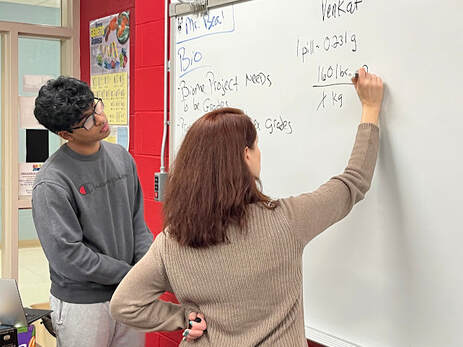 My independent project focused on exploring the cognitive impacts of overdoses of addictive amphetamines like Adderall. I wanted to explore how these stimulants affect cognitive function and if they have any long-term impacts on the brain. To investigate this, I used the Larval Memory Assay. As I conducted my experiments, I discovered countless unexpected challenges that came along with researching this topic. The process was tedious (especially training all the flies), and at times it felt like I was never going to get accurate results. However, I was determined to see it through to the end and obtain some real results.Through it all, I learned a lot about the scientific method, data analysis, as well as collaboration. I also developed a better understanding of the ethical implications of researching drugs and the responsibility that comes with conducting studies dealing with addictive substances. Although my journey in the TRIP lab is coming to an end, the knowledge and experiences during TRIP will stay with me for a lifetime. I’m grateful for the opportunity to have explored such an important and interesting topic and for the guidance and support of Dr. Leystra, Dr. Purdy, and my fellow researchers.After all is said and done, my TRIP has been an experience like no other and I will cherish the times I spent in the lab for the rest of my life!
I can’t believe we are at the end. The past few months in the lab just flew by! The TRIP experience has made me more excited about science and working in the lab! 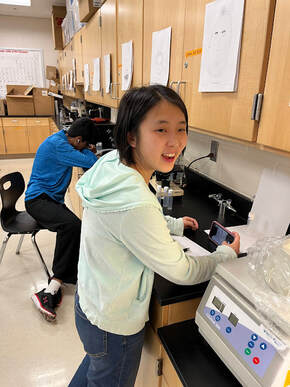 As mentioned in my previous blog post, for my independent project, I investigated the effect of CoQ10 and red yeast rice (two supplements taken to promote heart health) on overall health. To determine if the flies were healthy, I measured fly motility using the negative geotaxis assay and collected pupal developmental data. I was surprised to find that red yeast rice actually decreases fly motility and decreases % eclosion, inhibiting pupal development. Perhaps red yeast rice has side effects similar to statins and should be taken with caution. Overall, TRIP has been such a rewarding experience! I learned how to be resilient and persevere through difficulty. Besides working in the lab, I learned how to bring scientific research to life by telling a compelling story. Although I will definitely miss going to the TRIP lab every Saturday afternoon, I am excited to apply the knowledge and skills I gained to tackle new scientific problems in the future. Lastly, thank you to Dr. Purdy, Dr. Leystra, TAs Austin, Keith, and Jenan, and my TRIP classmates for this incredible experience!
|
Archives
April 2024
Categories
All
|
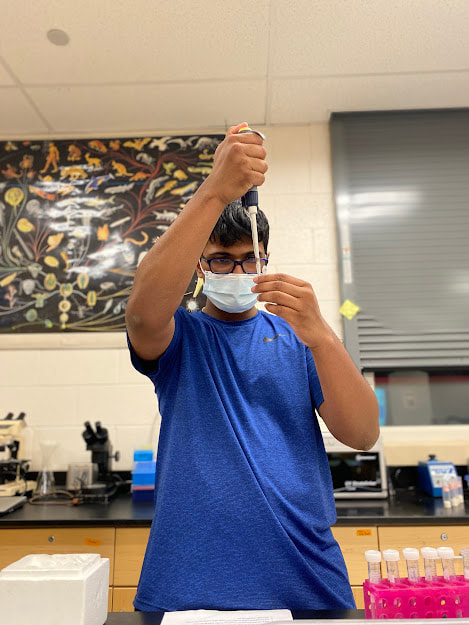










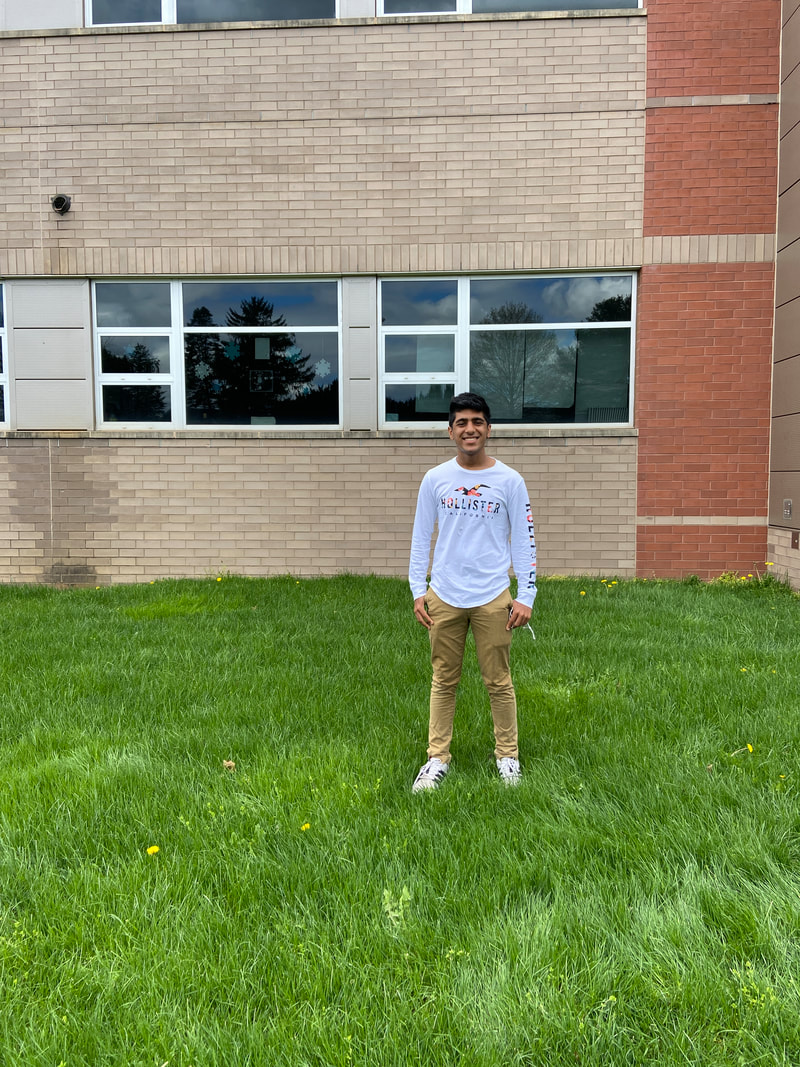





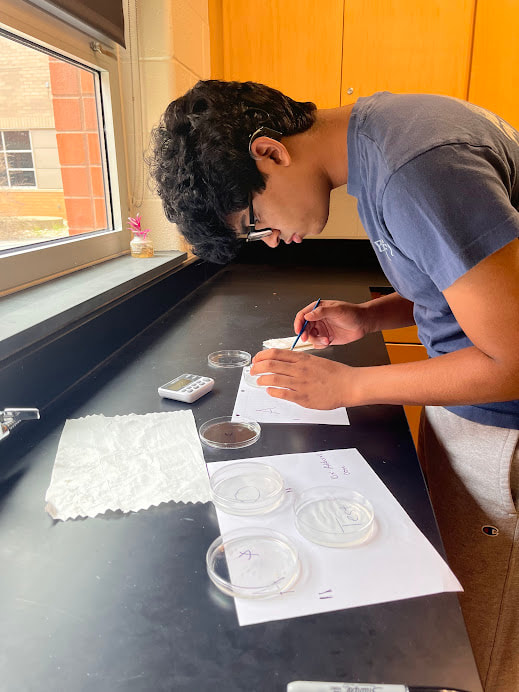
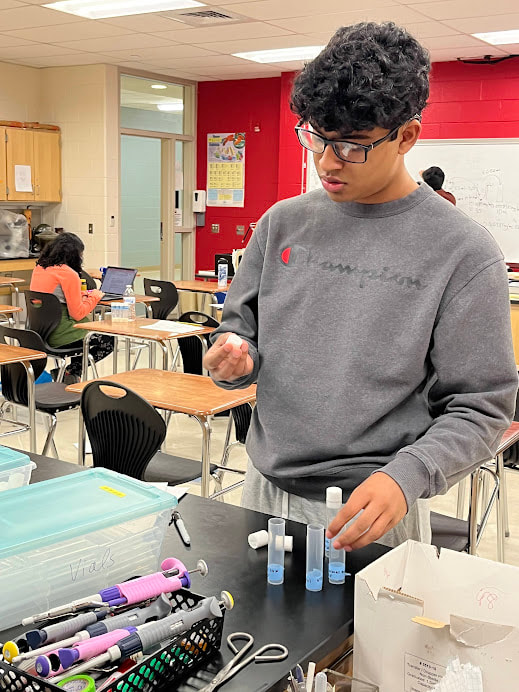
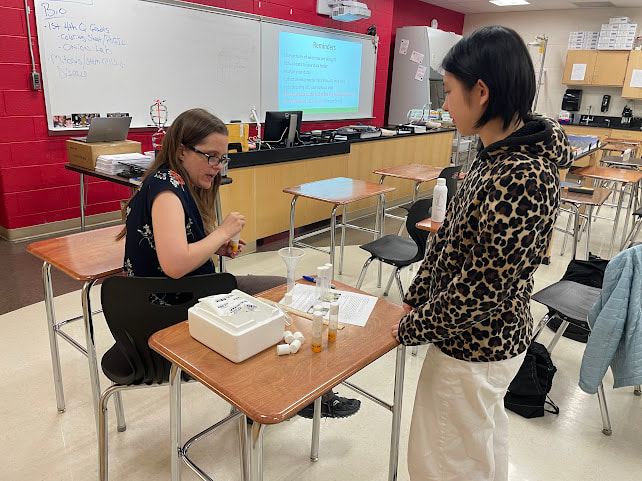
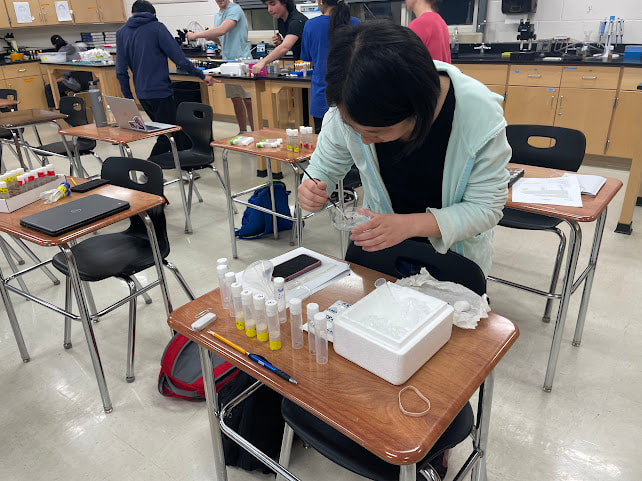

 RSS Feed
RSS Feed